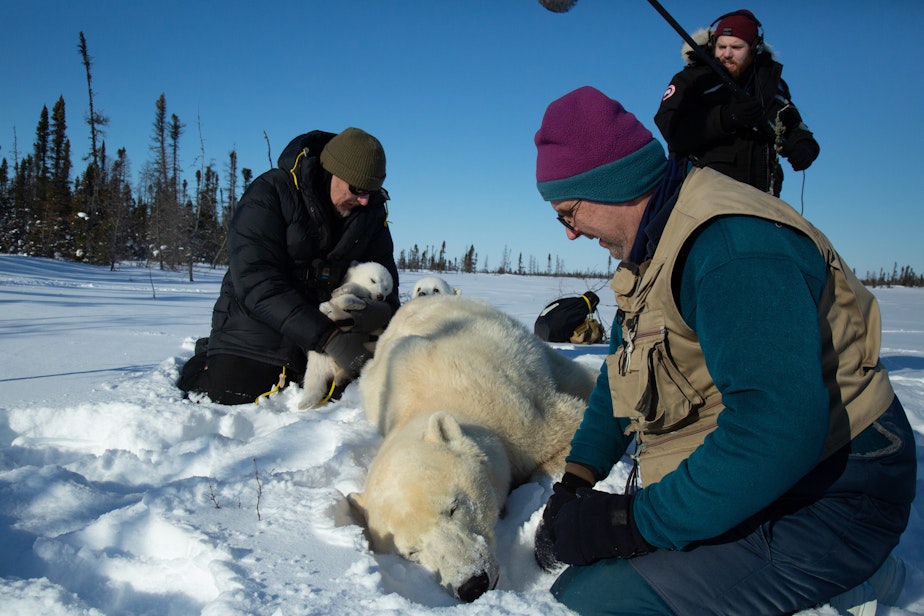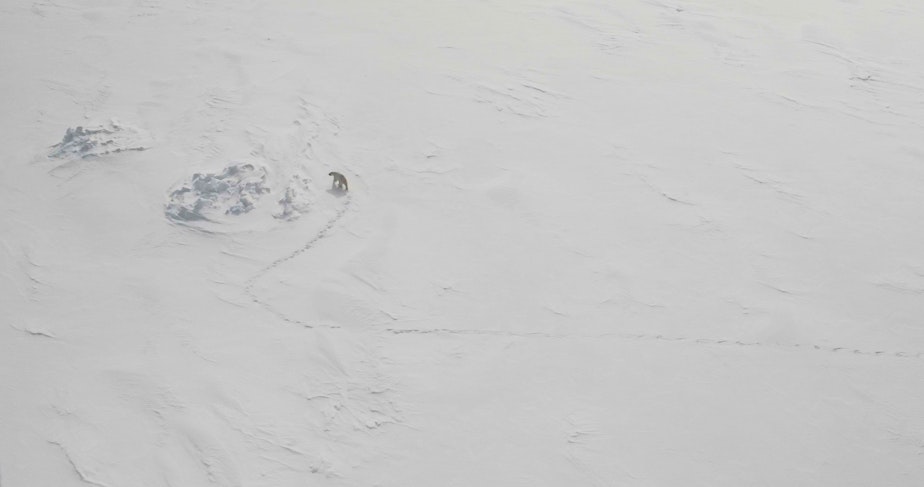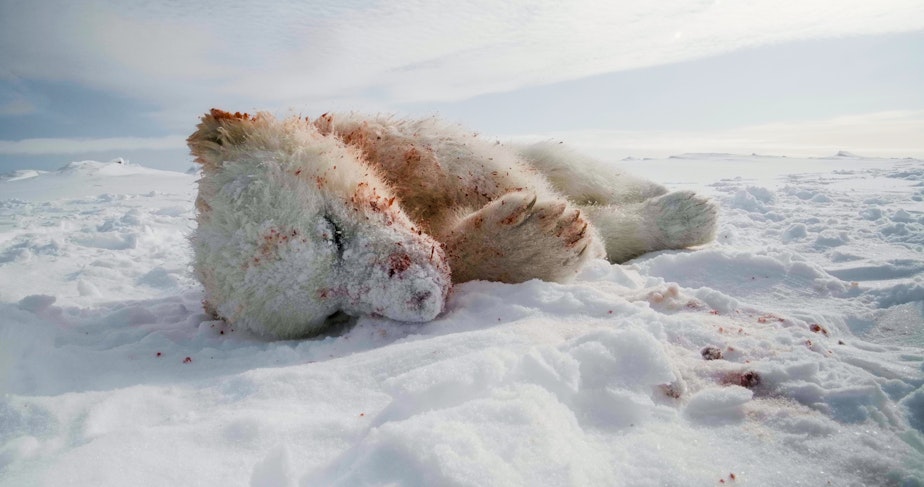The polar bears of Hudson Bay: cubs, climate, and calories, part 2

We learn about calorie counting for polar bears and what the future could look like for the Hudson Bay polar bear population.
We’re back in the helicopter with polar bear researchers Nick Lunn and Dave McGeachy, searching for mother bears with cubs.
This is springtime over the huge, frigid landscape. Mother bears are waking up after eight months of fasting and heading out to the sea ice of Hudson Bay. We’re back in the air after finding the female bear, without any cubs. And it doesn't take long for Lunn to spot something.

“There's another bear, heading out … It's another bear running,” Lunn said.
A small figure running through the snow.
“Sawing off at 11 o'clock," Lunn said. "Right off our nose. In this rubble slightly to your left. I still can't tell if there's a cub.”
We’re right over the main denning area, so most bears here are new mothers with little cubs. But it’s hard to tell, have we found a family group, or another single bear?

Looking across this hostile environment from up here — nothing but ice and biting cold wind — really makes you think about what it takes for these bears to survive. And how they’ve evolved for these conditions.
“Bears are out on the sea ice and that's where they want to be. And they build up all their energy by hunting seals. That's what they wanna do. That's what they're built for. That's how they evolved,” Lunn said.
During the springtime, the name of the game is seals. Eat as much as you can before the ice goes away. Especially if you’re a mother with new cubs. They each dug a maternal den in the fall, gave birth in December, nursed their cubs, and are now coming out very hungry.
“Then that female is gonna take those cubs back out onto the sea ice, where she's going to replenish her reserves that she's lost over eight months, and she's gonna look out and raise those cubs,” Lunn said.
In this last episode of Season 5, we’ll look at the challenges that polar bears mothers and cubs face in the spring. There is a whole list of dangers before we even get to climate change and loss of sea ice. And we’ll explore how the ever growing season of summer is a threat to the survival of this population around western Hudson Bay in the Canadian north.

THE WILD is a production of KUOW in Seattle in partnership with Chris Morgan Wildlife and Wildlife Media. It is produced by Matt Martin and Lucy Soucek, and edited by Jim Gates. It is hosted, produced and written by Chris Morgan. Fact checking by Apryle Craig. Our theme music is by Michael Parker.
Follow us on Instagram (@thewildpod) for more adventures and behind the scenes action!


